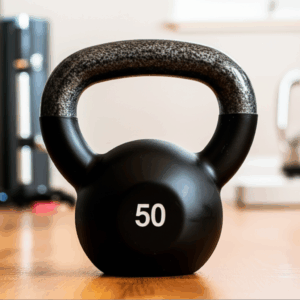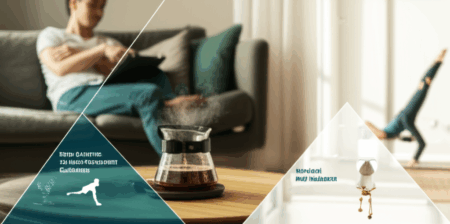In an era defined by constant demands and always-on connectivity, the specter of burnout looms large, affecting professionals across every industry. Characterized by profound emotional, physical, and mental exhaustion, burnout can derail careers and diminish quality of life. But what if a potent antidote to this pervasive modern malady was as simple as dedicating 25 minutes a day to physical activity? New research suggests it is, offering a compelling pathway to significantly reduce your risk of succumbing to this debilitating condition.

The Science Behind the 25-Minute Breakthrough
A recent study published in the Journal of Affective Disorders has shed new light on the powerful link between regular exercise and a reduced risk of burnout. Researchers from Kangbuk Samsung Hospital’s psychiatry department surveyed 7,973 workers between 2020 and 2022, analyzing their physical activity levels and burnout symptoms.
The findings are remarkably encouraging: individuals who engaged in at least 25 minutes of moderate or vigorous exercise daily, alongside an additional 30 to 60 minutes of light activity, experienced a staggering 62% lower risk of burnout. Even without reaching the full 60 minutes of light activity, consistently performing at least 25 minutes of moderate or higher-intensity exercise still correlated with a reduced risk of burnout. This study is notable for being one of the first to directly examine the mental health effects of different exercise intensities and durations on working adults within their everyday routines.

How Exercise Fights Burnout: Beyond Just Sweating
The benefits of physical activity extend far beyond physical fitness, offering a holistic defense against the various facets of burnout. Exercise combats burnout through a combination of psychological and physiological mechanisms.
Stress Reduction and Mood Enhancement
Physical activity is a powerful stress reliever. It triggers the release of endorphins, often dubbed “feel-good hormones,” which naturally elevate mood and create a sense of well-being. Simultaneously, exercise helps regulate and reduce levels of stress hormones like cortisol, preventing their excessive accumulation that can lead to chronic stress and, ultimately, burnout. This balancing act helps foster a calmer state of mind and increased emotional resilience.
Improved Sleep Quality
Sleep disturbances are a common symptom of burnout. Regular exercise can significantly improve both the quality and duration of sleep. By expending physical energy during the day and promoting a rise in body temperature that gradually decreases, exercise facilitates deeper, more restful sleep. Better sleep, in turn, enhances overall recovery and stress management, making individuals more resilient to burnout.
Boosted Energy and Focus
While it might seem counterintuitive to expend energy when feeling drained, exercise actually boosts overall energy levels and combats feelings of fatigue. Regular physical activity improves cardiovascular fitness, increases blood circulation, and delivers more oxygen and nutrients to muscles and organs. This enhances overall energy, making daily tasks feel less demanding and reducing the pervasive exhaustion associated with burnout. It also enhances cognitive function, improving memory, attention, and problem-solving skills, which can make managing workload more effective.
Enhanced Self-Efficacy and Detachment
Engaging in and achieving fitness goals, even small ones, can significantly boost self-efficacy and a sense of control. This increased confidence can “spill over” into professional life, making individuals feel more capable of handling work tasks and perceiving them as less demanding. Furthermore, exercise provides a crucial opportunity for psychological detachment from work, allowing the mind to unwind and let go of stressors, thereby reducing the risk of prolonged stress responses.

Making 25 Minutes Work for You: Practical Strategies
Integrating 25 minutes of moderate to vigorous activity into a busy schedule, especially when feeling overwhelmed, requires a strategic approach. Here’s how to make it a sustainable habit:
Defining Your Intensity
- Light Activity: This includes gentle movements like slow walking, moving around the office or home, or even performing household chores.
- Moderate Activity: This raises your heart rate and makes you breathe faster, though you should still be able to hold a conversation. Examples include brisk walking, leisurely cycling, dancing, swimming, strength training, or washing your car.
- Vigorous Activity: This is more intense, making you breathe hard and fast, and you’d find it difficult to speak more than a few words. Examples include sprinting, fast cycling, aerobics, high-intensity interval training (HIIT), or heavy weight training.
The study suggests a combination of moderate/vigorous activity with light activity is most effective, but even just the 25 minutes of higher intensity movement yields significant benefits.
Creative Ways to Incorporate Movement
- Lunch Break Workouts: A 25-minute workout can easily fit into a lunch break, offering a midday energy boost and a mental reset. Bodyweight circuits, a brisk walk, or a short cardio routine are all viable options.
- Split Sessions: You don’t have to do all 25 minutes at once. Two 12-13 minute sessions or even three 8-9 minute bursts throughout the day can accumulate the necessary time and still be effective.
- Active Commuting: If feasible, incorporate walking or cycling into your commute.
- Morning Energizer: Start your day with a quick workout to boost energy and set a positive tone.
- Evening Wind-Down: A gentle evening walk or yoga session can help improve sleep quality.
- Incidental Activity: Look for opportunities to move more throughout your day – take the stairs, park further away, or walk while on phone calls.
Finding Your Fit and Staying Consistent
- Choose Activities You Enjoy: The “most effective” exercise is ultimately the one you will actually do consistently. Whether it’s dancing, hiking, cycling, team sports, or solo gym sessions, find what resonates with you.
- Prioritize Consistency: Even short, consistent workouts are more beneficial than sporadic, intense sessions. Building a routine provides structure and a sense of accomplishment.
- Variety is Key: Incorporating a mix of aerobic activities, strength training, and mind-body practices like yoga or Tai Chi can offer a wider range of physical and mental benefits.
- Listen to Your Body: While pushing yourself is important for fitness gains, avoid overtraining, which can lead to its own form of “exercise burnout” characterized by persistent fatigue, decreased performance, and increased stress.

Overcoming Common Hurdles
The biggest barrier to daily exercise is often perceived lack of time or motivation. By viewing these 25 minutes not as an obligation, but as a crucial investment in your mental and emotional well-being, it becomes easier to prioritize. Start small if needed, perhaps with just 10-15 minutes, and gradually build up. The goal is progress, not perfection.
Conclusion
Burnout is a serious challenge in today’s demanding world, but the evidence is clear: consistent physical activity is a powerful tool in its prevention. By committing to just 25 minutes of daily moderate to vigorous exercise, coupled with some light activity, you can significantly reduce your risk of burnout and cultivate greater resilience, energy, and overall well-being. It’s a small investment with profound returns for your mental and physical health.







